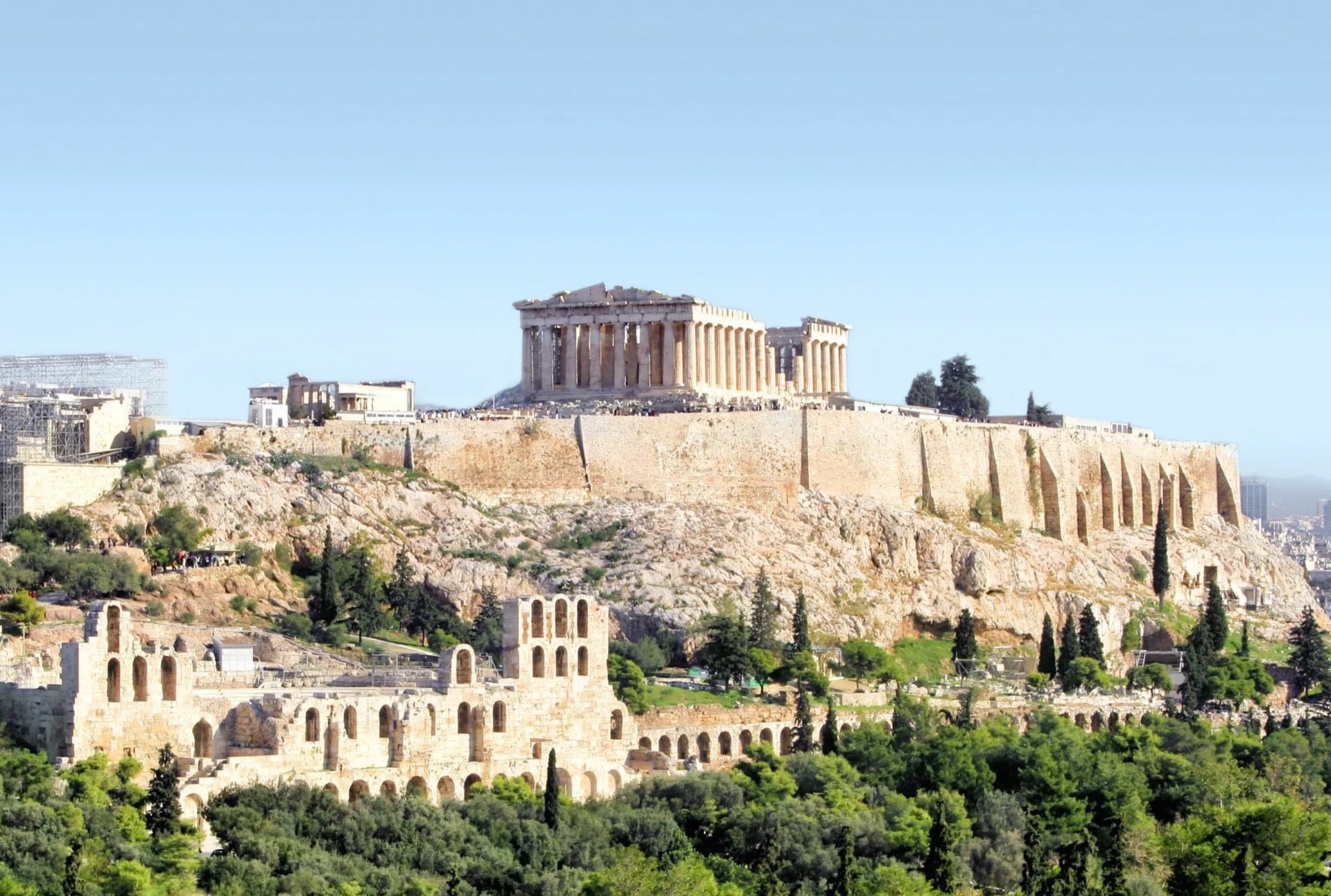
Ancient Agora
Attica & Central Greece
The Agora was the center of Athenian democracy, where the city's most important political functions were exercised and where both Pericles and Socrates once walked. The ruins of the ancient Agora, the exceptionally well-preserved temple of Hephaistos and the restored Stoa of Attalos may be visited in the shadow of the Acropolis at a site characterized by particular natural beauty.

At the foot of the hill along the western side of the plateau, the architectural remains of the buildings that from the 5th century BC. housed the institutions of the Athenian Democracy are located.
The archaeological site to be visited is defined by the streets:
In the North by the pedestrian street Adrianou, where the central entrance of the archaeological site is located.
In the West by the archaeological pedestrian street Apostolou Pavlou, where the entrance for people with mobility impairments to the area of the Temple of Hephaestus is located
In the South by Asteroskopiou dirt road and Polygnotou street
In the East by Vrysakiou, Poikilis and Areos Streets.

From 1st of April until 31 of August 08:00 - 20:00
Last entrance to the Site at 19:30
On the 1st of September the opening hours apply, due to a gradual reduction in the length of the day, as follows:
1st to 15th September 08:00 - 19:30
Last entrance to the Site at 19:00
16th to 30th September 08:00 - 19:00
Last entrance to the Site at 18:30
1st to 15th October 08:00 - 18:30
Last entrance to the Site at 18:00 and
16th to 30st October 08:00 - 18:00
Last entrance to the Site at 17:30
Last entrance to the Site at 19:30
On the 1st of September the opening hours apply, due to a gradual reduction in the length of the day, as follows:
1st to 15th September 08:00 - 19:30
Last entrance to the Site at 19:00
16th to 30th September 08:00 - 19:00
Last entrance to the Site at 18:30
1st to 15th October 08:00 - 18:30
Last entrance to the Site at 18:00 and
16th to 30st October 08:00 - 18:00
Last entrance to the Site at 17:30
Click here to locate the Site on map
The Ancient Agora was the heart of the Ancient city. It was crossed by the Panathenaic street which started from Dipylon at the Kerameikos and ended at the Acropolis. The plateau of the Ancient Agora is flanked from the east by the Stoa Attalos, where the Museum of the Ancient Agora operates, and from the west by the hill of Agoraios Kolonos, at the top of which dominates the Temple of Hephaistos and Athena, the best preserved temple of classical antiquity.At the foot of the hill along the western side of the plateau, the architectural remains of the buildings that from the 5th century BC. housed the institutions of the Athenian Democracy are located.
The archaeological site to be visited is defined by the streets:
In the North by the pedestrian street Adrianou, where the central entrance of the archaeological site is located.
In the West by the archaeological pedestrian street Apostolou Pavlou, where the entrance for people with mobility impairments to the area of the Temple of Hephaestus is located
In the South by Asteroskopiou dirt road and Polygnotou street
In the East by Vrysakiou, Poikilis and Areos Streets.
The Archaeological Site of the Ancient Agora is wheelchair accessible through the main entrance, at Adrianou 24 [assistance by a companion is advisable]. In the area of the Temple of Hephaistos, wheelchair access is possible through the entrance at the Thiseion Square [Apostolou Pavlou Street], upon communication [210 3214824, 3210180].You can see the accessible passage at:
http://theheartofancientathens.gr/wordpress/wp-content/uploads/2019/07/Efaath_AncientAgora_accessibility.jpg
The archaeological museum of the Ancient Agora is fully accessible to visitors with reduced mobility and wheelchair users. A WC for the physically challenged is also provided.
At the information desk, at the Museum in the Stoa of Attalos, tactile site plans and brochures in Braille in Greek and English are available for visually impaired visitors.
A guide for visitors on the autism spectrum is available at the internet site of the Ephorate: https://efaathculture.gr.
Moreover, our internet site presenting the Archaeological Sites that have been awarded the European Heritage Label http://theheartofancientathens.gr, is fully accessible to blind and partially sighted people in Greek, English, French, German, Italian and Spanish.
http://theheartofancientathens.gr/wordpress/wp-content/uploads/2019/07/Efaath_AncientAgora_accessibility.jpg
The archaeological museum of the Ancient Agora is fully accessible to visitors with reduced mobility and wheelchair users. A WC for the physically challenged is also provided.
At the information desk, at the Museum in the Stoa of Attalos, tactile site plans and brochures in Braille in Greek and English are available for visually impaired visitors.
A guide for visitors on the autism spectrum is available at the internet site of the Ephorate: https://efaathculture.gr.
Moreover, our internet site presenting the Archaeological Sites that have been awarded the European Heritage Label http://theheartofancientathens.gr, is fully accessible to blind and partially sighted people in Greek, English, French, German, Italian and Spanish.
At the "HELLENIC HERITAGE" Museum Shop you will find a variety of publications related to the place you visited, faithful copies of exhibits from the museums of Greece, a range of souvenirs such as fridge magnets, mirrors, notepads, etc., as well as items for the home, gifts, jewelry, scarfs, toys, etc. inspired by the Greek cultural heritage.
A visit to our Museum Shop completes your experience as a visitor, while the proceeds from the sales support the work of the archaeological service.
A visit to our Museum Shop completes your experience as a visitor, while the proceeds from the sales support the work of the archaeological service.

